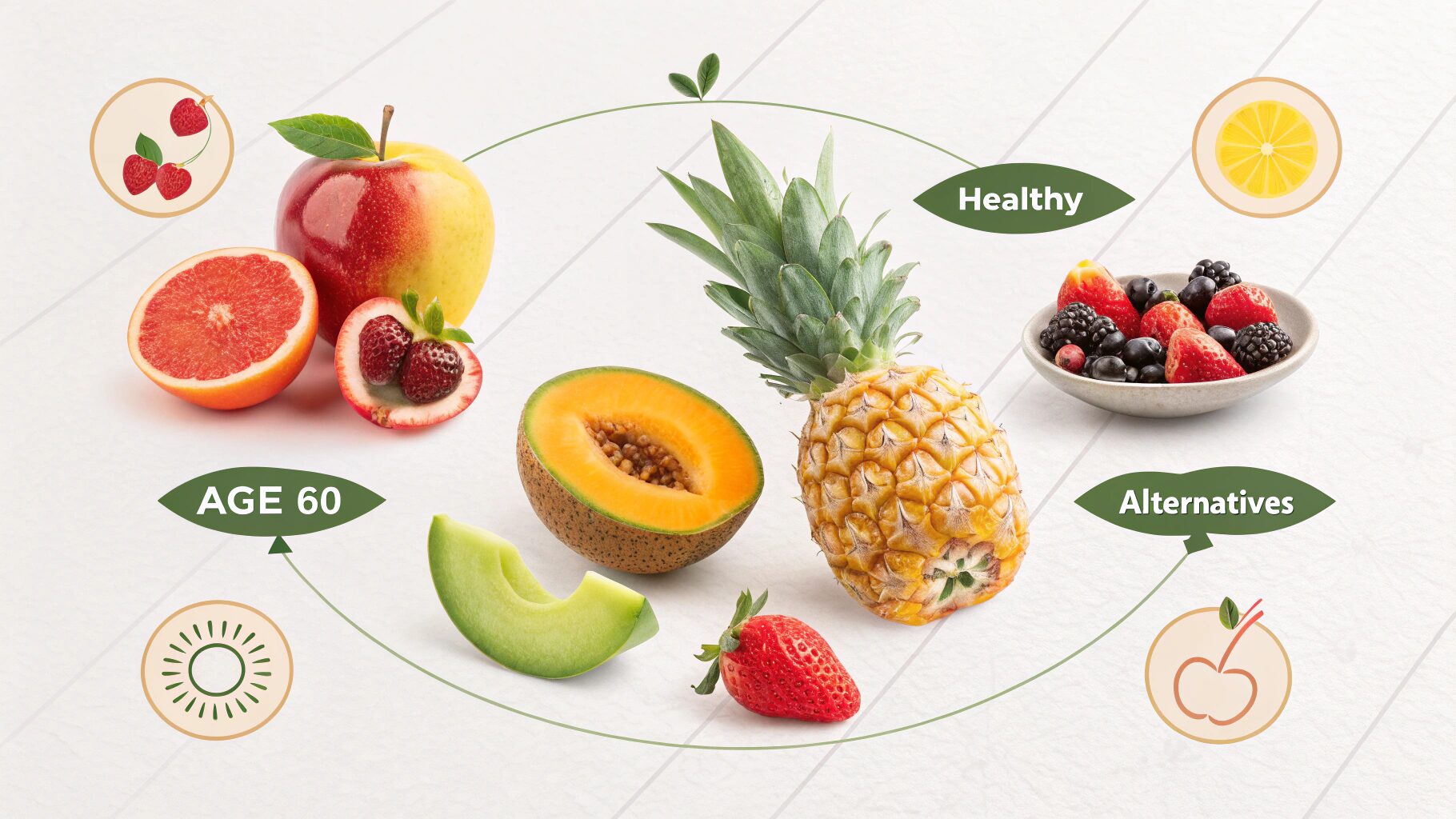As you age, maintaining leg strength becomes essential for balance, independence, and preventing falls. While fruits are generally healthy, some can contribute to muscle weakness, blood sugar spikes, or inflammation—factors that may affect your legs after 60.
Here are five fruits to consume in moderation if you’re focused on leg health—and five better alternatives to help you stay strong and steady.
1. Bananas (Too Much Can Upset Balance)
Why to limit: Bananas are rich in potassium, but they’re also high in sugar and starch. Eating too many can spike blood sugar and may lead to fatigue or heaviness in the legs.
Eat instead: Avocados – They also contain potassium but are lower in sugar and rich in healthy fats that support muscle function.
2. Grapes (High Sugar Content)
Why to limit: Grapes are high in natural sugars and low in fiber, which can cause quick energy drops, possibly leading to leg weakness and poor endurance.
Eat instead: Berries (Blueberries, Strawberries) – These are rich in antioxidants, lower in sugar, and help fight inflammation linked to muscle fatigue.
3. Pineapple (Acidic and High Glycemic)
Why to limit: Pineapple is highly acidic and has a high glycemic index, which can irritate joints and spike blood sugar, affecting energy and leg strength.
Eat instead: Apples – Mild, fiber-rich, and great for long-lasting energy without spiking blood sugar.
4. Watermelon (Mostly Sugar and Water)
Why to limit: Although hydrating, watermelon is mostly sugar and lacks the fiber and protein needed to sustain energy and muscle support.
Eat instead: Chia pudding with fruit – Provides steady energy with fiber, protein, and omega-3s to support muscle recovery.
5. Canned or Dried Fruits (Hidden Sugars)
Why to limit: Dried and canned fruits are often loaded with added sugars and preservatives, which may cause inflammation and weaken muscle strength over time.
Eat instead: Fresh oranges or kiwi – These are rich in vitamin C, support collagen production, and promote circulation in the legs.
Extra Tips to Support Leg Strength After 60
- Stay active with light strength exercises (like squats or leg lifts)
- Drink enough water to support muscle function
- Get enough protein and vitamin D daily
- Stretch regularly to maintain flexibility and reduce cramps
Final Thought
Fruits are important—but choosing the right ones makes a big difference, especially after 60. Swap out high-sugar or inflammatory fruits for nutrient-dense options that support your legs, joints, and overall energy.
Want more senior nutrition and mobility tips? Visit SeniorNova.com and start strengthening your body from the inside out.
